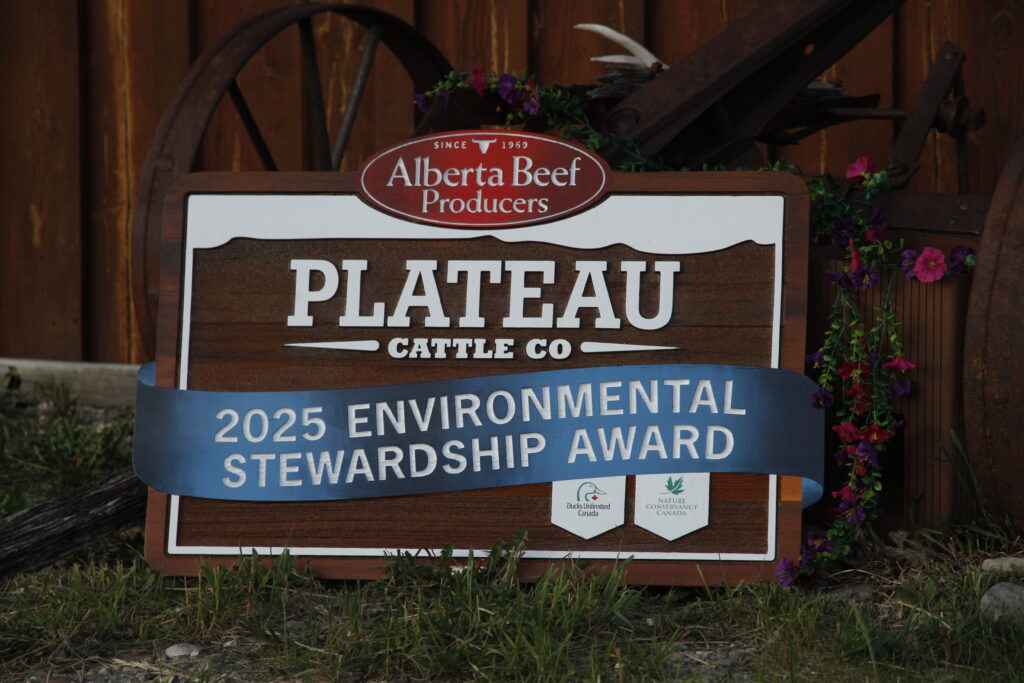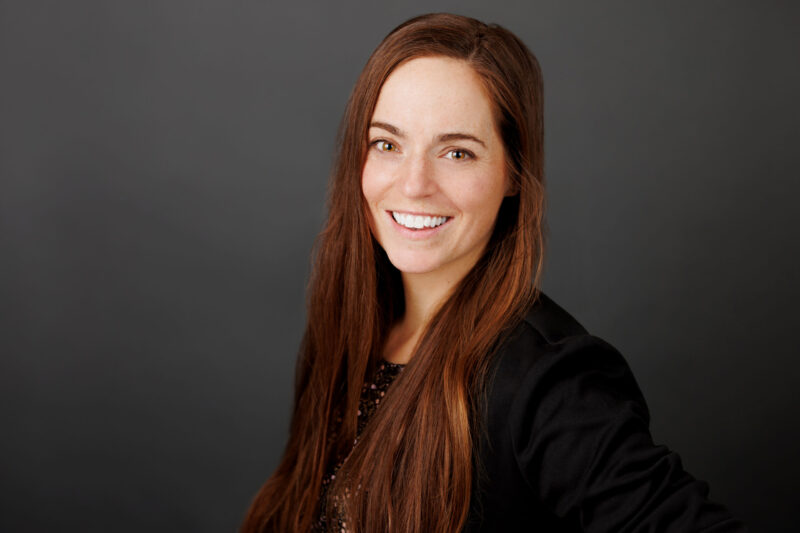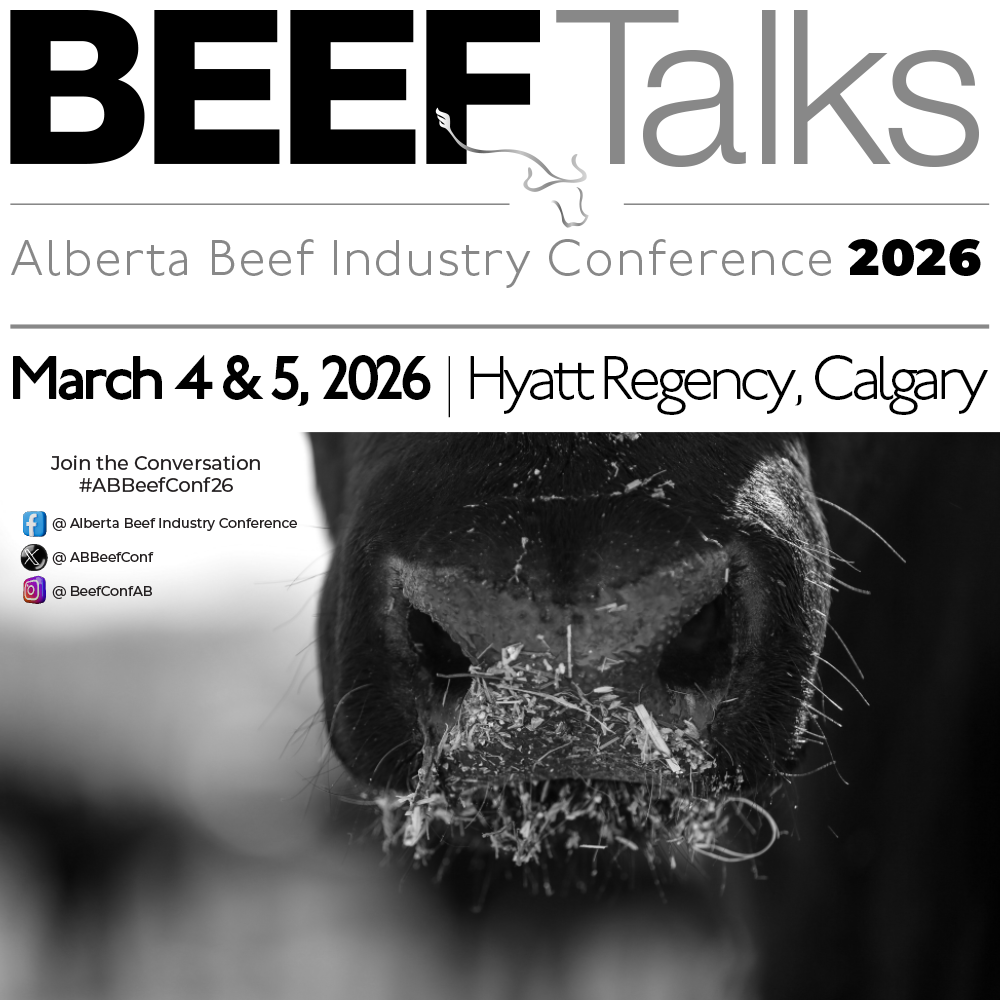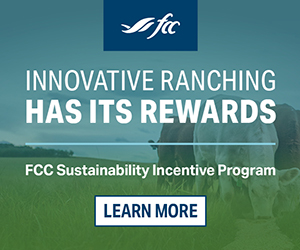AB Direct - Steers
Rail: ---
AB Direct - Heifers
Rail: ---
US Trade- Steers
Rail: 355.00-360.00 (IA, NE) last week
US Trade - Heifers
Rail: 355.00-363.00 (IA, NE) last week
Canadian Dollar
0.19
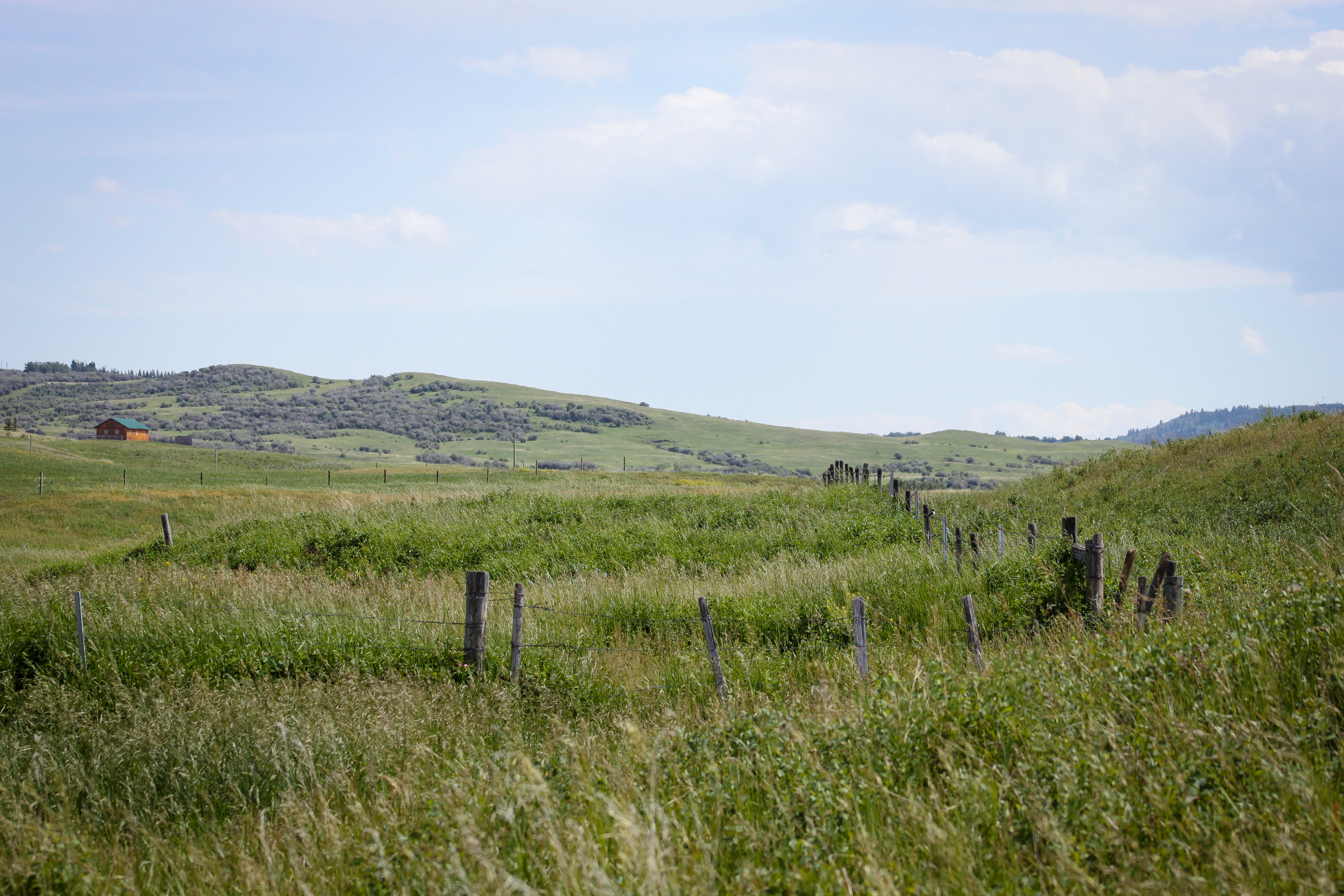
A shared philosophy in the Foothills
One of John Smith’s favourite places is a short walk from the home he grew up in. It’s high enough that you can see neighbouring towns and the breathtaking Rocky Mountains. It’s a place of beauty and philosophy. At night, you can look one direction to see the intensity of light from growing cities, then turn the other way to see almost complete darkness.
“That’s one of my favourite spots,” he says, “and it’s almost a philosophical thing – that you see what’s coming and you see what’s behind you.”
That respect for the past and hope for the future is something he shares with his wife and business partner, Laura Laing. It permeates every facet of their operation, from the art on the walls to the management decisions that guide Plateau Cattle Co.
Mountain Views
“Plateau comes from Plateau Mountain – just over my shoulder there,” says John facing east, so we catch his words in the wind. “Every piece of land that we have – even rented land – you can see that mountain.”
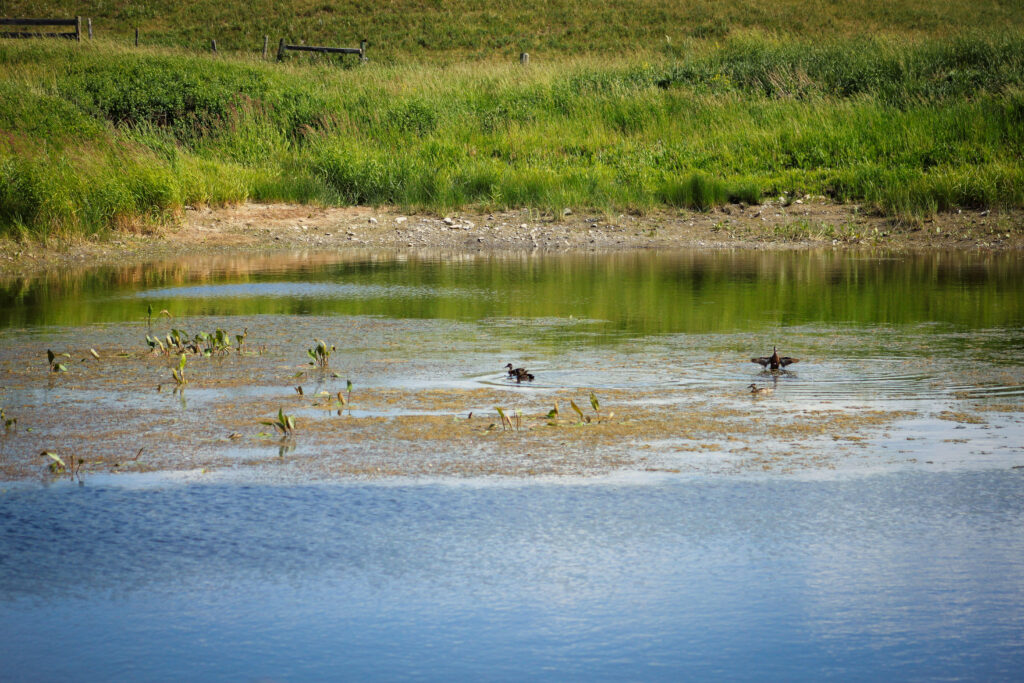
We’re there to film and tour the ranch, which is west of Nanton, Alberta, nestled in the foothills of the eastern slopes of the Rocky Mountains. It’s home to a rich complement of wildlife, from grizzly and black bears, cougars and moose, to bobcats and badgers.
“That’s a really big part for me,” reflects Laura “to be this haven for the animals and for the environment. We’re grass and ecosystem managers, and the cattle help us do that.”
The land managed by Plateau Cattle Co. is made up of rolling hills. In the winter, chinooks blow the hills off and make rough fescue and other native vegetation available to both wildlife and cattle.
“It’s some of the greatest cow country in Canada, I think,” says John.
Pride in People
John’s roots on the ranch go back to his grandfather, John Hay, who started managing the ranch in 1958. Hays was also well known for his work in the industry, including for the Canadian and Alberta Hereford Associations. His saddle hangs in the horse barn as a quiet reminder of his generation’s legacy.

John’s mother, Serena and her husband, Dan Smith, took over in 1971, building their own legacy of honesty and integrity. John refers to his parents as “quiet professionals,” reflecting on the way they balanced hard work, an equal partnership on and off the fields, and family time.
“They did a lot,” says John. “They added to it. They made it possible so either me or my brother (or both of us) could come back to the place and be able to have a great life.”
Serena, now in her 80s, may have stepped back from management, but she’s close and happy to stay involved, offering mentorship and help with tasks ranging from scanning tags at processing to baling hay during the hot summer months.
Dan sadly passed away in the summer of 2020. John takes a moment to collect his thoughts, letting birdsong fill the quiet.
“Most people would be lucky to have a dad like that,” he says. “He did a lot for our family and the community – he tried his guts out every day.”
Around a decade ago, Dan and Serena’s hopes for succession became a reality, when John and Laura stepped up to the plate. With a career spanning business development and communications, and her own consulting firm, Laura offers a unique skillset to the operation, and continually brings new ideas and approaches to the ranch. John follows in the footsteps of his family, both in his hands-on work on the ranch, and his commitment to the community.
Both John and Laura are passionate volunteers, who attest to the importance of both encouraging and challenging one another.
John also has two now-adult children – Clayton and Shelby.
“Hopefully one day they’ll want to do what we do,” says John. “And then that’ll be the fourth generation.”
A Changing Business
Over nearly seven decades and three generations, the family ranch has seen significant change, but not in everything.
“Processing here still looks a little traditional,” says Laura, lighting up at the chance to describe how the crew works in partnership with each other, their horses, and the cattle dogs to slowly bring the pairs in at daybreak.
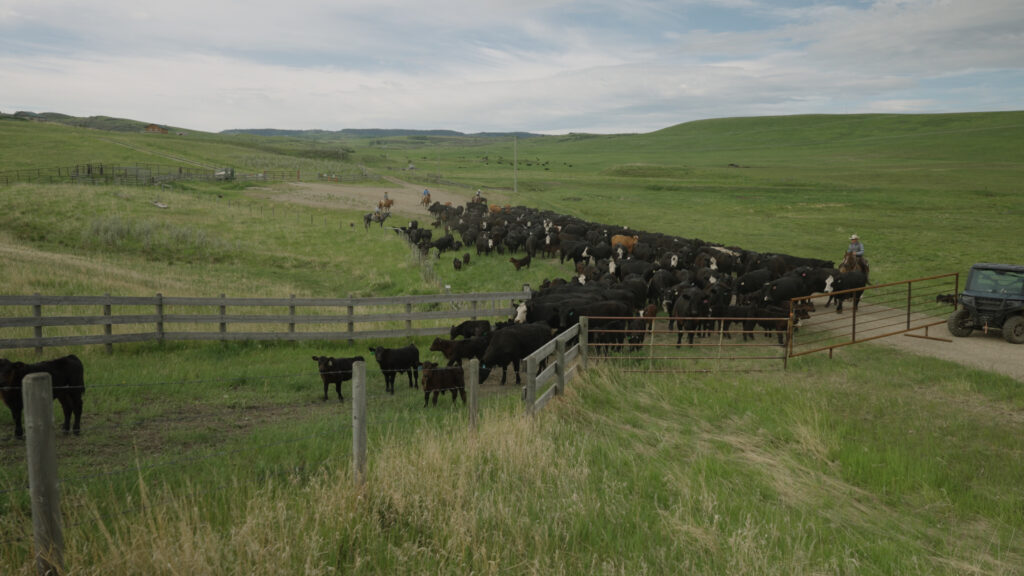
“Moving cattle with horses and dogs – that works well for us,” explains John. “There’s a lot of good things about that. A horse moves at almost the same speed as a cow. It’s quiet – you can hear a calf bawling in the trees. There’s a lot of good things about the old way.”
“Then we get them to the pens and sort them,” adds Laura. “And when things change is in our processing shed.”
The processing shed is a comfortable reprieve from the sun and wind. Inside, there’s a customizable chute, complete with vertical ju-jitsu mats fixed to the sides to accommodate the calves’ smaller frames. The entire shed is new to the generation, and so is the chute-side herd management software used to record and track events for every animal.
In addition to these changes, Laura and John have ceased hot iron branding, opting only to freeze brand replacement heifers. They’re also experimenting with fence line weaning, the Sandhills Calving System, Lidocaine bands, genomics on replacement heifers, and tactile stimulation (more colloquially referred to as calf massage).
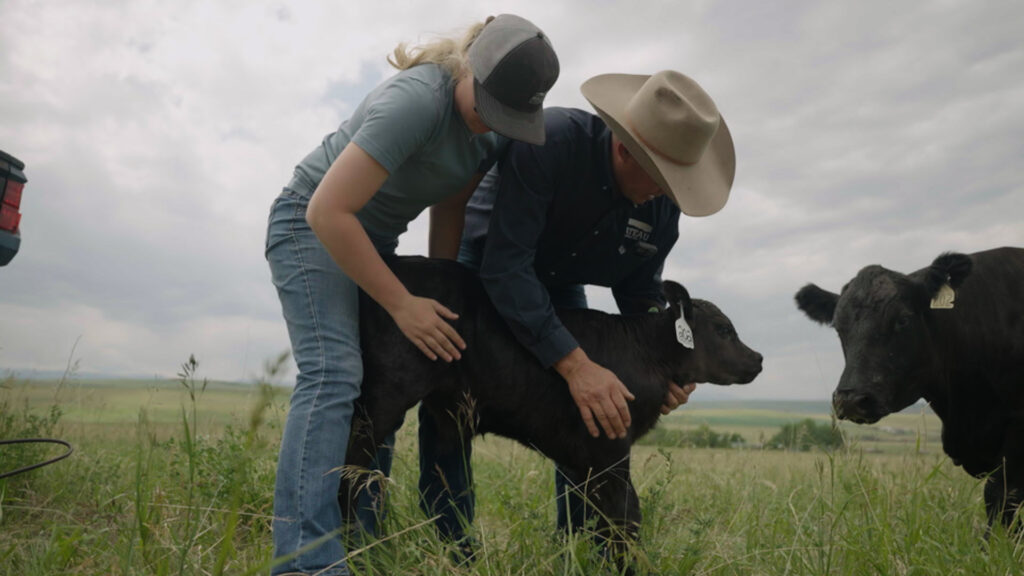
John says these changes have all happened in the last ten years, and every time he and Laura improve something, it feels like they need another challenge.
“We’re passionate, we really love this, and,” he laughs, “what else are we going to do?”
Managing with the Environment
While both John and Laura are devoted to the domestic animals that surround them, there’s a greater force guiding their work on the ranch.
“The land takes on its own form, like a living being to us,” says Laura. “This land, and all it offers us in the eastern slopes here and in the foothills, is an incredible place that we’re really privileged to live in and so it’s important that we protect it. In everything we do every day, we take that into consideration.”
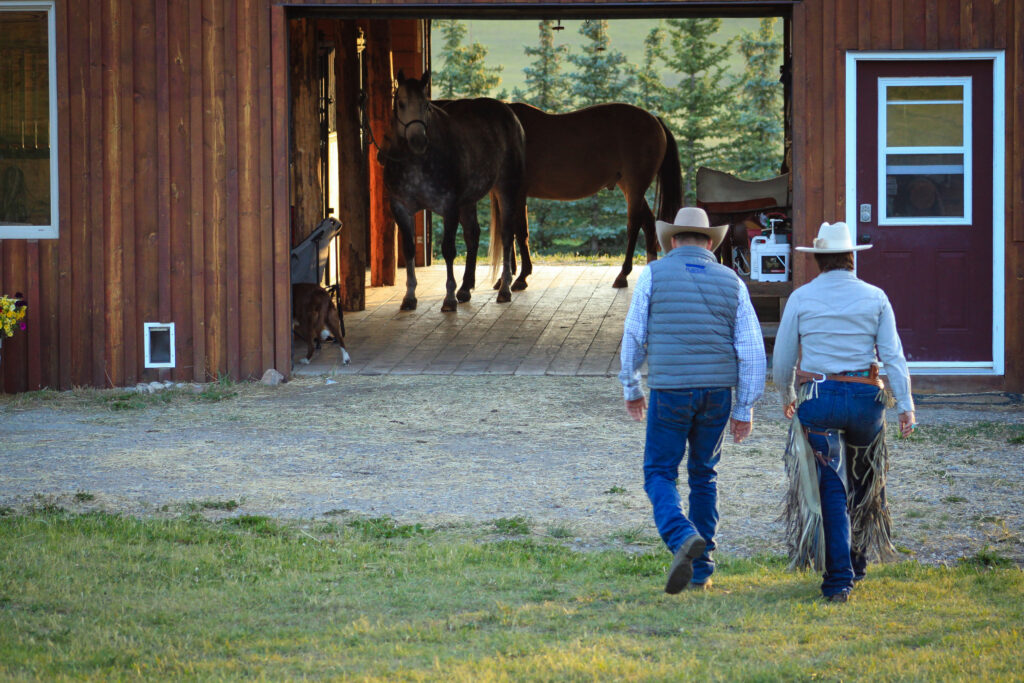
Most days, Laura and John consider the work they have yet to do, but the film allows them to reflect on some of their achievements. They acknowledge the completion of the first part of a multi-step process to protect riparian areas.
“There’s a lot of pride when you go out there,” says John, sharing the improvements he’s seen to biodiversity and bank health.
With the fencing around the creek and dugouts done, they will now complete their plans for off-site watering systems. In addition to taking pressure off the wells, this will make a dramatic difference in riparian health. They also plan to expand their work into supporting tree and shelterbelt health and continuing to enhance the water to the best of their ability.
And perhaps most of all, John and Laura hope that they will share the land and their stewardship philosophy with future managers, leaving a legacy that inspires each generation to care for the land better than the one before.
John smiles. “I’m excited about that.”
For their efforts in riparian and rangeland health, animal care, and sustainability, Alberta Beef Producers is pleased to announce John Smith and Laura Laing and Plateau Cattle Co. as the 2025 recipients of the Environmental Stewardship Award.
